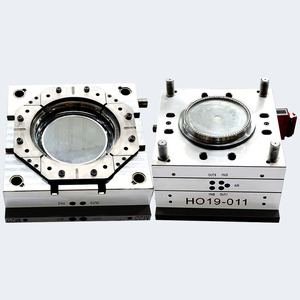Blog Information
- منشور من طرف : rixiang alex
- نشر على : Dec 03, 2020
- الآراء : 321
- الفئة : تقنية
- وصف : In the processing of Bucket Mould products, what are the reasons for the large surface roughness and lack of gloss?
- موقعك : Taizhou, 浙江省中国
نظرة عامة
In the processing of Bucket Mould products, what are the reasons for the large surface roughness and lack of gloss?
1. As far as the mold processing equipment is concerned, it is most likely caused by insufficient material supply, resulting in the processed products not meeting the standard.
2. For injection molds or other plastic molds, it may be because the gate is too small or the runner is too thin, such as poor polishing, mechanical abrasion, damp, mist, rust not cleaned, etc., resulting in a fine surface Concave and concave, poor exhaust: no cold slug well, etc.
3. In terms of mold processing technology, there are mainly the following four points.
A. The barrel heating is uneven, the barrel temperature is too high or the material temperature is too low, and the mold temperature is too low, which causes the rubber injection molded parts to condense and harden on the surface of the cavity prematurely and leave the mold surface, and the cavity surface roughness cannot be reproduced, and then tarnished.
B. The injection pressure is low, the injection speed is too slow, and the injection time is insufficient, resulting in poor sealing of plastic processing parts and affecting gloss
C. The injection rate is too large or too small.
D. The cooling time is too short, and the plastic injection molded parts are not cooled enough to make the surface fade. At this time, you should increase the gate, reduce the injection mold temperature and increase the cooling time.
4. Raw materials
A. The raw materials are not dried and contain volatile substances, which are easy to agglomerate on the surface when encountering a cool cavity, which prevents the melt from being in close contact with the mold surface.
B. Plastic degradation affects the color tone.
C. Excessive amount of auxiliary or mold release agent or poor quality, mixed with dust, causes the plastic injection molded parts to become fuzzy and dark, and pits.
When the plastic mold is processed, the plastic is brought into the mold except for the heat radiation and the heat flow out of the mold. Most of the heat is carried out of the mold by the circulating heat transfer medium through heat conduction. The heat transfer medium includes water, oil, etc.
The temperature of the plastic mold is generally controlled by adjusting the temperature of the heat transfer medium, adding heat insulation boards and heating rods.
To reduce the mold temperature, it is generally achieved by passing warm water (about 25 degrees) to the fixed mold and "chill water" (about 4 degrees) to the moving mold. When the channel of the heat transfer medium, that is, the cooling water channel, cannot pass through other parts, materials with better heat transfer efficiency should be used to transfer the heat to the heat transfer medium.
To increase the temperature of the mold, it is generally achieved by passing hot water into the cooling water channel and heating by the hot water machine. When the mold temperature is high, an electric heating rod can be used for heating. For molds that need to be heated, to prevent heat loss due to heat conduction, a resin insulation board should be added to the mold panel.
In the hot runner mold, the hot runner plate has a high temperature requirement and must be heated by a heating rod. In order to avoid the heat of the hot runner plate from being transferred to the fixed mold, it will be difficult to cool the fixed Paint Bucket Mould. Therefore, the contact surface with the fixed mold should be minimized during design. And use heat insulation sheet for heat insulation.
